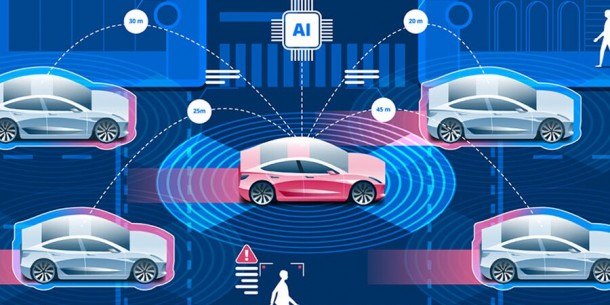
Post updated 19-August-2022
The World Health Organization (WHO) has reports that state there are between 20 and 50 million non-fatal road accidents globally every year as of 2021, many of which are attributed to speeding and distracted driving. In particular, the UAE has a clear focus on road safety, in line with the country’s clear ambitions under Vision 2071 to enhance transport and traffic safety to reduce accidents and fatalities. This pillar of the centennial vision will see the nation placing mobility as a focus for sustaining health and safety, led by the Road Transport Authority in partnership with the automotive industry.
In the previous strategic visions, the digital transformation of this sector laid the groundwork for future transport considerations, moreover with Vision 2071, the UAE will undoubtedly build this to further champion connectivity and enhanced safety.
As part of these efforts, the UAE is consistently enhancing its emergency service provision, in light of road accidents stemming from speeding and distraction behind the wheel. The Dubai Corporation for Ambulance Services (DCAS) has over 330 active vehicles on its fleet, responding to emergencies across Dubai. Advances within the emergency service field are directly influenced by the experiences of first responders on ground, who are responsible for supporting and aiding drivers across the nation, in times of need.
In light of the critical role played by first responders, we at Road Safety UAE, led by General Motors’ OnStar Connected Services, explored through in-depth interviews, the processes in place to best help drivers when under duress. The findings elaborated on our existing understanding of emergency service providers’ needs, being information on the location, nature and vehicles involved in an accident, as well as number of victims, types of injuries and medical histories, to respond quickly and effectively in an emergency. When provided with detailed incident overviews, first responders shared that their first assessment can be completed within 10 seconds, saving invaluable time for those in need. The responders also highlighted that they often remained onsite from 10 to 40 minutes, ranging up to 60 minutes when a person was trapped within.
When presented with the concept of a Connected Car and the services offered by OnStar, first responders welcomed the possibilities presented, spanning individual driver details, enhanced safety offerings, and seamless insights shared after accidents take place.
As a real-life example in the event a driver was left unconscious in a collision on the road, they would have to rely on passersby to alert emergency responders. In a Connected Car, sensors will not only automatically detect the collision but will share GPS location data with emergency responders get the right help when needed most. The technology has the ability to take this a step further by providing additional information to responders such as direction of impact and impact severity. This is the cutting-edge and potentially life-saving technology that will elevate the existing emergency aid offering and drive real-world impact on road safety.
As not every accident happens on a well-lit, well-traveled road, therefore OnStar can also enable remote functions when in critical situations; a Connected Car’s horn or lights can be activated, alerting emergency responders to its specific location, ultimately saving critical time. In the same vein, the vehicle’s doors can be remotely unlocked in an emergency, enabling responders an easier access to victims.
Through information presented by a Connected Car, responders can better plan resources, and through ongoing connectivity can further advise victim on administration of first aid measures. Informing future connectivity concepts, the interviewed responders also pondered on the positive outcomes of alert systems in informing drivers of road incidents, as well as smart driving and sensors attuned to pre-existing driver conditions.
The results of the study were supplemented by viewpoints of accident victims, which unlocked new levels of insight into the effect of major car accidents and outlined the integral role that connected features can play. Unsurprisingly, fear, anxiety and shock were called out as the most prominent emotions in the immediate aftermath of an accident and one in five respondents reported that they were unable to make a decision on what to do next. At this point, a Connected Car is able to provide a real-world solution, by connecting drivers to a real human to provide actionable support and help take control of the situation, alerting emergency responders and staying on the line with victims until help arrives.
While one in three respondents reported feeling either extremely satisfied or satisfied with the existing safety features in their non-connected vehicle, they also expressed keen interest in features that can support in an emergency. Undeniably, a Connected Car offers life-saving potential.
From the study, it’s clear that connectivity underpins the future of mobility. Mobility solutions need to uphold an increasingly higher standard of technology incorporation, to support emergency responders and drivers alike, create a safer transportation system and ultimately, happier, safer cities.
Share your story











